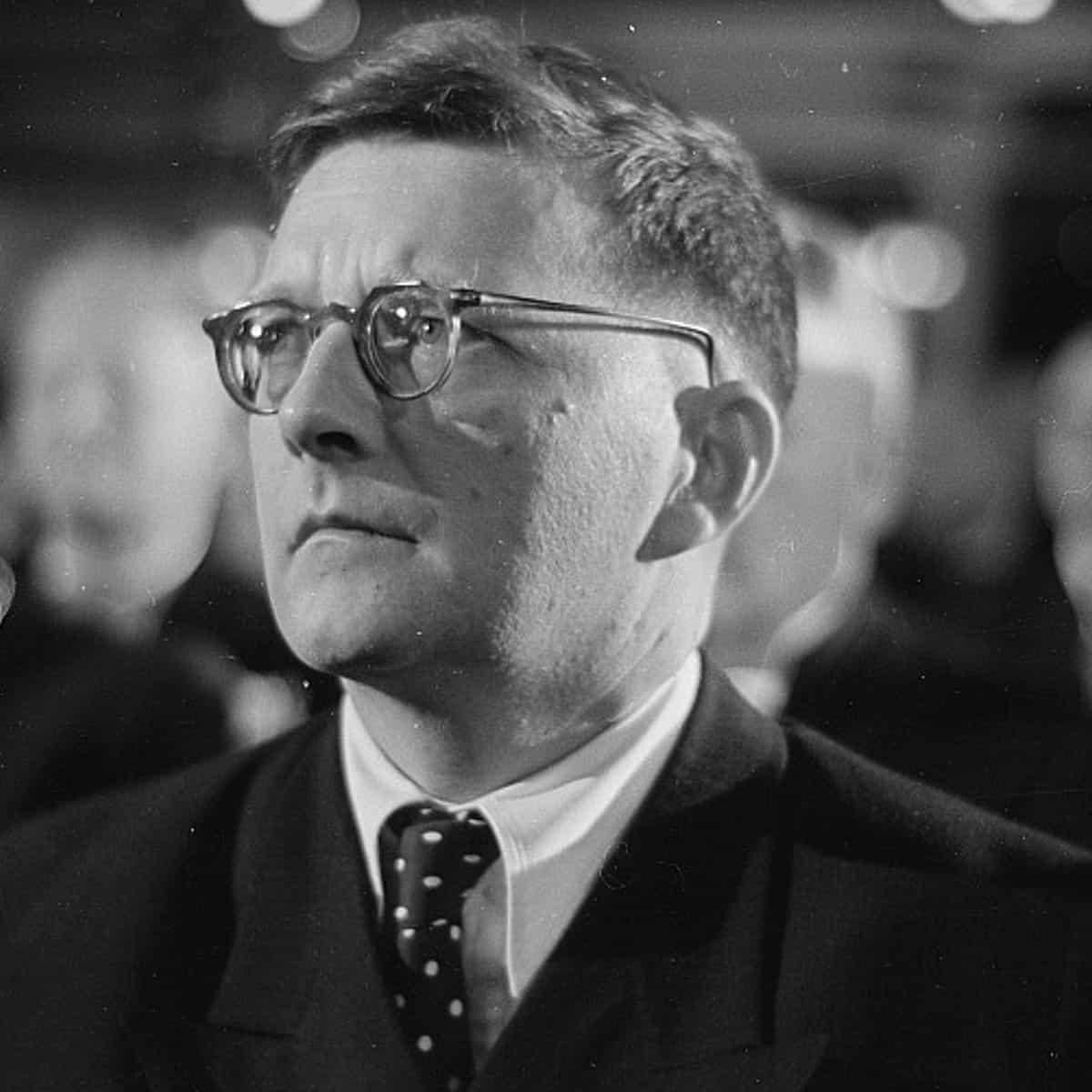
The works Shostakovich composed during World War II—or, as the Russians call it, The Great Patriotic War—form a distinct chapter in his output. These include the wartime music one might expect—marches, choruses, and even settings of songs of Russia’s allies (including, in 1943, an arrangement of When Johnny Comes Marching Home)—but Shostakovich made his major wartime statements in classical forms. The wide expressive range of these works is best outlined by the path from the “Leningrad” Symphony of 1941—a popular, heroic, and somewhat bombastic work—to the Eighth Symphony of 1943, searing, painful music that is a more direct response to the war. Shostakovich also wrote two chamber works during the war, both composed at the retreat the Soviet Union maintained for its composers in the forest of Ivanovo, north of Moscow. The Piano Trio No. 2 and the String Quartet No. 2 were composed during the summer of 1944 and premiered at the same concert in Leningrad on November 12 of that year.
Preview on Spotify:
These two works come from the darker side of Shostakovich’s wartime experience. The Trio is one of his finest and most frequently performed works. It was composed at just the point advancing Soviet soldiers had begun to discover the atrocities that had been committed against Russian Jews by the Nazis, and some of that makes its way into the trio’s harrowing final movement, which is based on what Shostakovich himself called a “Jewish theme.” The character of String Quartet No. 2 is more elusive, and it has remained one of the least known of the cycle of Shostakovich’s fifteen string quartets. This quartet makes no direct reference to the war. There are no music quotations, no subtitle, no connections by Shostakovich himself to the events swirling about him as he composed it. Yet this is big music (nearly 35 minutes long), dark, powerful, at times dissonant, and it is hard not to feel some of the same spirit in this quartet that runs through the Eighth Symphony and Second Piano Trio.
Shostakovich Saturday Morning Series
4 Saturdays at 10am
1/21, 2/4, 3/4 and 5/13, 2017
Herbst Theatre
$55/$45/$30
TICKETS
JANUARY 21:
Quartet No. 1 in C Major, Op. 49
Quartet No. 2, in A Major, Op. 68
FEBRUARY 4:
Quartet No. 3 in F Major, Op. 73
Quartet No. 4 in D Major, Op. 83
MARCH 4:
Quartet No. 5 in B-flat Major, Op. 92
Quartet No. 6 in G Major, Op. 101
MAY 13:
with Roger Woodward, piano
Piano Quintet in G minor, Op. 57
Quartet No. 7 in F-sharp minor, Op. 108
The quartet is in the expected four movements, and at first glance these seem fairly conventional: a sonata-form first movement, a slow movement, a dance movement, and a theme-and-variation finale. But none of these movements is quite what one expects, and the impact of this music is unsettling rather than reassuring. Each of the movements has a title. The opening Overture, in sonata form, employs thematic material that can turn aggressive and dissonant, and it drives to a conclusion that relaxes none of its tensions. The Recitative and Romance opens with a long fantasia by the first violin over unbarred chordal accompaniment; its central episode, reflective at first, gradually turns strident before the return of the opening recitative. The Waltz is muted throughout. Second violin and viola pulse a ghostly suggestion of the waltz rhythm, and the cello quickly sings the sinuous waltz tune. This waltz offers several episodes in different characters and keys, some of them quite busy, before the return of the opening material and a quiet close. The variationfinale opens with a slow, rising-and-falling theme-shape. This shape then crystalizes into the viola’s lengthy solo statement (quite “Russian”-sounding), and four extended variations follow at different speeds. The writing can be virtuosic here, and at moments some of the aggressive character of the opening movement reappears. At the end, the slow theme-shape from the movement’s opening returns, and the quartet closes on a full-throated restatement of the variation theme and a firm A-minor chord.
—Notes by Eric Bromberger
